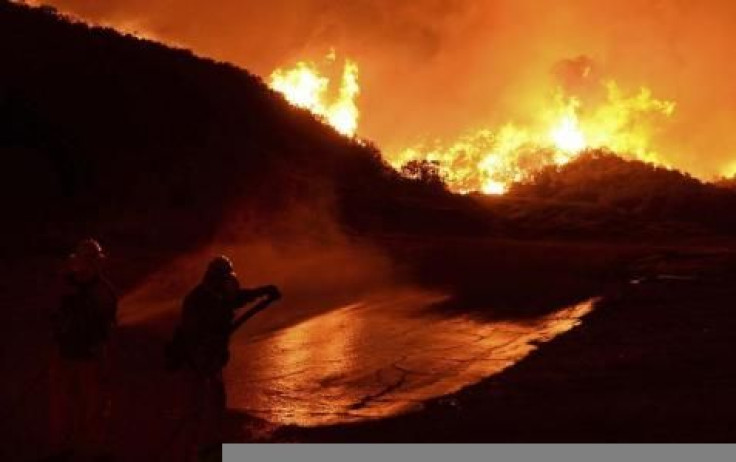Nearly 3,000 Evacuated From Southern California Wildfire Allowed To Return Home As Fire Is 40% Contained

Nearly 3,000 people evacuated from their homes amid a Southern California wildfire have been allowed to return home. The California wildfire exploded in size over the weekend and destroyed at least six houses in northern Los Angeles County.
According to the Reuters, the so-called Powerhouse wildfire began over the weekend, burning through about 40 square miles of brush in the canyons and mountains north of Los Angeles. As the fire grew Sunday, it began encroaching on the rural communities of Lake Elizabeth and Lake Hughes, about 45 miles north of downtown Los Angeles, and nearly 3,000 people and 700 homes were evacuated. Six homes have been reported destroyed and 15 more have been damaged.
By Monday evening, the wildfire is largely under control. Firefighters have contained about 40 percent of the blaze and diverted its direction away from many homes in danger. Now, the Associated Press reports that about 2,800 people have been allowed to return to their homes as firefighters continue to contain the wildfire. Full containment is expected within the week.
"The fire moved into an area where vegetation changed from real dense to real sparse," U.S. Forest Service spokesman Matt Corelli told the AP.
While Lake Elizabeth and Lake Hughes residents are allowed to return home, residents of Antelope Acores are still under an evacuation order. Local police are checking homes in the community for fire threats.
The Powerhouse wildfire appears to have been exacerbated by this weekend’s high temperatures. Fires are common during Southern California summers, but exceedingly hot temperatures can make the problems worse. This particular fire even affected areas that had not burned since the 1930s.
"With the intense heat, the fire gets more intense and you often have trees that are torching, and when that happens, large smoke plumes start going up," Dana Howlett, a spokeswoman for the U.S. Forest Service, told Reuters.
Howett also added that the sight of a wildfire, even from a distance, can be very intense. The large flames and smoke can make it appear that a volcano has erupted in the area.
© Copyright IBTimes 2024. All rights reserved.











